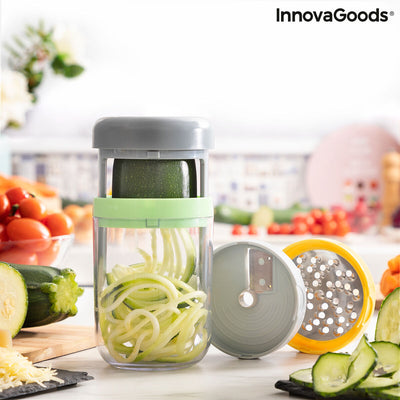Perks & Traps of Power Nap for Busy Achievers
With our busy lifestyle, it isn't so easy to make yourself rest for a bit. However, if we continue to ignore all the signs of tiredness, we become increasingly sleepless, overwhelmed, and stressed. But where all that can take us? Some people have trouble sleeping at night, and this affects their everyday routine in the day. So if you're facing chronic tiredness or low energy at midday, it's time to change your habits a bit!
Constant strain, numerous problems, and stress can weaken your immunity, making you sluggish, tired, and sickly. Napping is one way to solve these problems and can often offer relief or refreshment for you after a tiring meeting, intense workout, or sleepless night.
Why do you need to nap?
Lately, medical professionals state napping as a type of the most profound relaxation. For most working people, napping may seem like a matter of luxury. But considering how many health benefits it brings, you'd better make naps your habit.
Napping won't compensate you for inadequate sleep or a troubled sleep at night. Still, it can enhance your wakefulness, mental agility, cognitive functions, reflexes, and memory. Meanwhile, napping will reduce your level of stress and anxiety. Now let's look at various types of naps, so you can choose the one that suits your schedule best.

Napping culture around the world
Many people worldwide believe that napping is their only option to get energy if they're exhausted from work or had a long weekend partying too hard.Sleeping habits rely heavily on our cultures and reflect how we structure our daily routines.
In western culture, the act of taking a nap is still sometimes perceived as lazy. However, it may bring many benefits, such as reducing stress, boosting the immune system, and improving memory and focus when taken in spurts of up to half an hour. There are many places in Europe, South America, and Asia where napping is an important cultural tradition. Different countries have their own "napping rituals" - let's look at them!
"Riposo," or Italian afternoon break
There's a universal belief in Italian culture that taking a quick nap can help you stay productive and energized till the end of the day. It's called riposo - an extended lunch break in the middle of the day that allows you to slow down, enjoy your lunch, and take a short nap. Typically, it starts around 12:30 to 1:30 pm and ends anywhere from 2 to 4:30 pm.
Some Italian businesses even close in the early or late afternoon, allowing the people to go home and have lunch with their families. They can also take an hour's nap if necessary before heading back to work. This change in schedule helps boost energy and productivity to work on top of your performance until the late evening.
"Siesta," or Spanish napping ritual
Siesta is an indispensable part of Spanish culture. Whenever people get tired, they take a break by going to sleep. This tradition can be traced back to medieval times when most people worked outside but then started to feel sleepy in the afternoon heat. Before artificial lighting became commonplace and air-conditioners were invented, people generally found it helpful to stop work for a little while in summer for a midday nap.
The siesta is a Spanish napping ritual that puts faith in the belief that life will be rewarding when you get enough good rest. It discusses all factors relevant to this appetite for slumber, including why a nap is absolutely essential to feel great and how energy savings can increase productivity.
"Inemuri," or Japanese "nap anytime, anywhere" practice
In Japan, people usually get less nighttime sleep than in any other nation. That happens because of tight work schedules and long work hours. Considering their need to get more energy without sacrificing work hours, the Japanese developed an inemuri napping practice. Inemuri means taking short, 5-10 minute naps every time you can allow them.
The place and time don't matter for inemuri practitioners - the thing is to recover as much energy as possible without wasting much time. So it's common for Japan to see napping people in a subway, parks, or lines. A study shows that napping helps Japanese shift workers boost energy levels, restore alertness, and regulate circadian rhythms.
Types of naps
Nap-a-Latte
It's excellent for all coffee lovers, but you shouldn't use it very often because of its strong effect. Nap-a-Latte means you quickly drink a cup of coffee and nap for half an hour, and ask everyone not to disturb you. While you will be asleep, the effect of caffeine will reach your blood, and after waking up, you'll feel rested and get an ultimate energy boost.
CEO
Yes, it sounds funny, but everyone, not just CEOs, can enjoy this type of nap. It's also called a power nap or a short midday sleep. This nap implies that you'll sleep around 25 minutes between 1 pm to 3 pm. It may be challenging to get up after this type of nap, but the benefits it brings are worth the risk. CEO improves memory, reduces stress, increases focus, reduces the risk of diabetes, and prevents dementia.
The Sports nap
If you're a pro/semi-pro athlete or exercise regularly, consider trying this type of nap. Just nap for some time to enhance your motor memories, fasten the process of tissue and muscle recovery, and energy boost.
The Disco nap
Use this napping method if you're planning to party all night long. Take a 90 minutes nap before going out, so your body will go through both mild and deep sleep phases. Combine the Disco nap with Nap-a-Latte to get a more substantial effect. This type of nap enhances your memory, gives you an energy boost to stay up all night, and increases creativity. Try to wake up at your usual time the next morning to avoid disturbing your sleep patterns.
The New Mom nap
It is not unusual for new parents to be chronically sleep-deprived. Newborns constantly demand their parents' attention, being extremely active during night-time. If you want to stay productive also as an individual, try to take a nap while your baby is sleeping. This way, you can manage more tasks in a day and quickly wake up during the night to check on your baby.

Napping: tips and benefits
As a professional, who wants to be super-productive on a working day, you should know about the harmful effects insufficient sleep may bring. Without enough sleep, you may end up being sleepy, slow thinking, and stressed. The more severe problems caused by lack of sleep are risks of diabetes, obesity, and higher blood pressure.
Luckily, you can use some tricks to doze off faster and get up well-rested. Thus, napping occurs to be the most useful trick to stay active throughout the day. And here's how you can make it your habit.
Tips for napping like a PRO:
- Determine which sleep pattern best suits your schedule. No matter what nap pattern you go with, they all have two things in common: they make you more energetic and improve your quality of sleep.
- Pay attention to your lifestyle, habits, and daily routine. In order to make your napping really effective and beneficial for you, try making some adjustments to your everyday routine like picking up on different habits.
- Choose the type of nap that you'll be able to have daily. It will help you turn your napping into an energy-boosting habit.
- Create a napping environment that will help you relax. You can add scent sticks, candles, or even use relaxing essential oils to wind down and relax your body & mind.
- Keep your oasis of peace tidy because it will help your body to relax. A clean environent is a key to a structured, restorative nap.
- If it's possible, nap in a dark, quiet place with a perfect temperature. To have a better chance at fighting off sleep, find a dark and quiet place to take a power-nap. Make sure it is also the right temperature and avoid any loud noises or bright lights.
How napping helps you become more energized and stressless?
After numerous studies about napping effects on our body, scientists have come up with impressive results. According to psychologist Kimberly A. Cote, naps are increasing abilities of logical reasoning and symbol recognition.
University of Michigan study has shown that people who do daytime naps are less stressed and frustrated. That happens because sleeping provides us with emotional distance from any unpleasant events.

Moreover, University of California research has proved people do better at tests after sleeping than after studying. It's also fascinating that the positive effect is the same no matter the nap length.
Psychologist Sara Mednick states napping has the bonus advantages of good night-time sleep. Mednick has compared the impact of napping and drinking coffee. She believes that those who nap before 5 pm for an hour to an hour and a half can use their words better (both when writing and speaking) than others who are drinking coffee. Caffeine does improve attention, but not the memory itself.
Saarland University in Germany also performed research on the connection between memory and naps. The volunteers were learning one single word and meaningless word pairs. Half of them took a nap first, and others watched a movie. Both groups remembered well the single words. But, the subjects who took a nap memorized more word pairs.
Power nap traps
Aside from the benefits napping brings to our health, it may also have some adverse effects. To avoid them, nap only during the day and only for short periods. But what exactly are power nap traps?
It may worsen your sleep disorder
Short naps usually don't have any influence on your night-sleep quality. But if you're facing a sleep disorder, napping can worsen it. Frequent naps will make it harder for you to doze off at night.
It may cause sleep inertia
Another trap is sleep inertia. This condition may occur if you suddenly awake during a deep sleep phase. It happens when your nap surpasses half an hour, so try to wake up before your body enters a deep sleep stage. Sleep inertia results in dizziness and disorientation, which are incredibly unpleasant during the working day.
It may damage your health
The worst negative consequence of naps is that they may lead to some heart disorders. If you are prone to heart disease, your naps shouldn't lengthen more than an hour. In case you aren't inclined to heart disease, a rest that lasts around 60 minutes can unblock your cognitive performance, creativity, and memory.

What are the biggest misconceptions about napping?
Now let's dispel the most famous napping myths so that you won't have any doubts about their effect on our energy and mind.
Napping will cause exhaustion
You can easily avoid exhaustion by having short naps no longer than half an hour. After the nap, you will feel more invigorated and refreshed.
Napping will disturb your night's sleep
Unless you're facing a sleep disturbance, naps won't affect your night's sleep quality. Just make sure you have it before 5 pm.
The effect of napping will come only when you doze off
Just lying quietly for some time can have a significant impact on your energy level. Doing activities while you are tired will only cause further exhaustion.
Not everyone can nap
If you're not used to sleeping during the daytime, there's one way to teach yourself how to nap. Just lie down for some time each day. Finally, it will become your habit to relax at that exact moment.
Napping means your lazy
Many busy people avoid napping because they believe napping is just a waste of time. That's not true because naps help you recreate the energy and increase your memory. That means you'll perform your working tasks enthusiastically and with less stress.
Wrapping up
As you see, naps are a great trick that helps you stay productive, energized, and motivated during a working routine. It allows you to enhance your cognitive skills and prevent some serious diseases caused by lack of sleep. If appropriately used, napping methods will make your life brighter and more peaceful, so try to make it your healthy habit. Stay tuned for more insights on health and productivity!
Resources:
- Sleep-dependent Learning: a Nap is as Good as a Night (2003)
- Napping to Modulate Frustration and Impulsivity: A Pilot Study (2015)
- Benefits of Napping in Healthy Adults: Impact of Nap Length, Time of Day, Age, and Experience With Napping (2009)
- Nap Sleep Preserves Associative But Not Item Memory Performance (2015)








